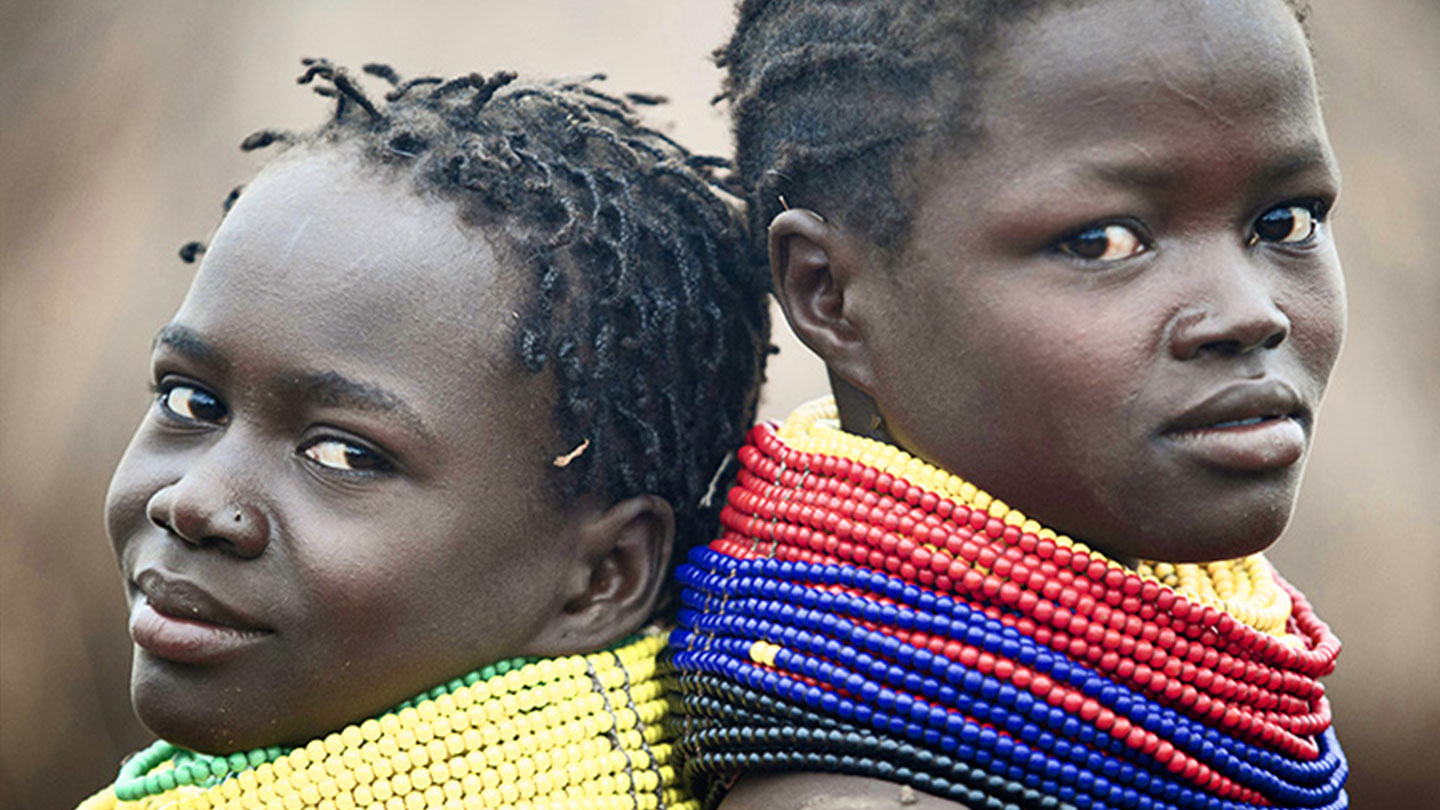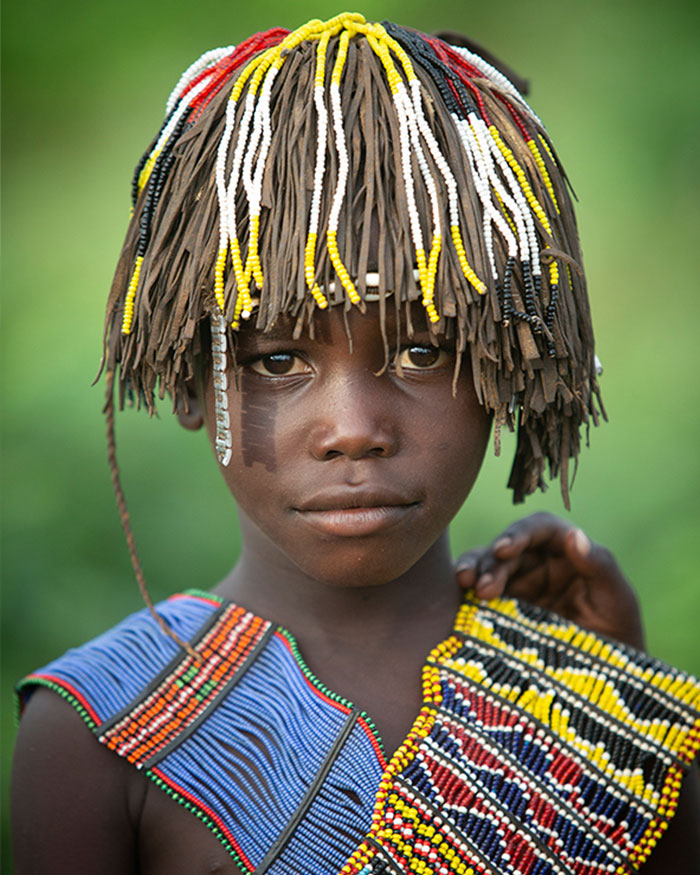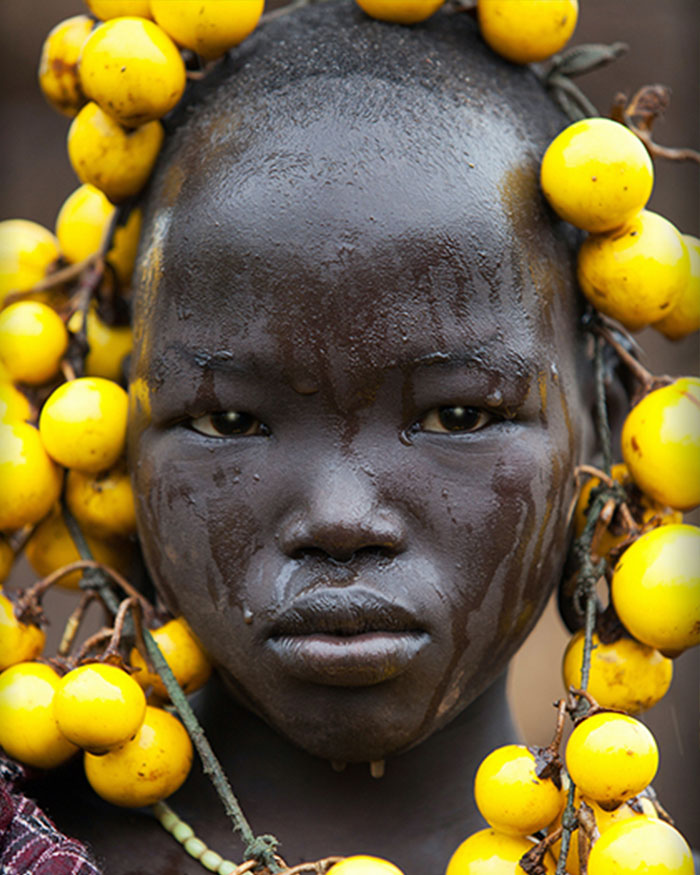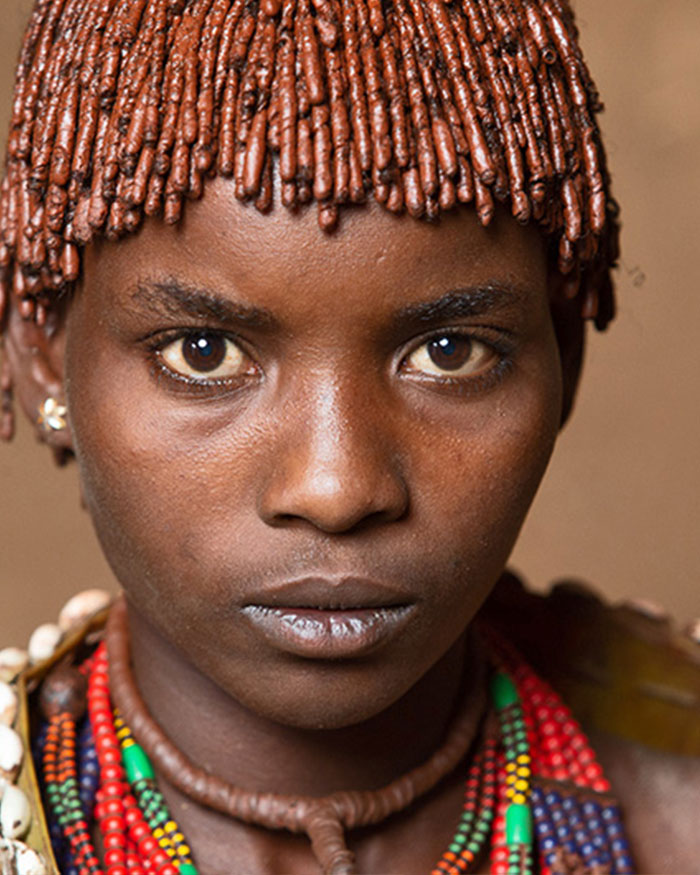Tribes of the Omo Valley
Arbore, Daasanach, Hamer, Bodi and Mursi tribes.
The lower valley of the Omo is believed to have been crossroads of a wide assortment of cultures and ethnicities that migrated through the region on the way to other destinations over many millennia
Day 1 – The tribes of the Omo Valley tour: The tribes of the Omo Valley tour starts in Addis Ababa.
Arrive in Addis Ababa, transfer to hotel, and Welcome Dinner. Dinner begins at 7:30 p.m. at Yod Abyssinia Restaurant, which serves the best spicy Ethiopian cuisine while watching an amazing display of Ethiopian dancing and music. Overnight at Jupiter Hotel, www.jupiterinternationalhotel.com
Day 2 – The tribes of the Omo Valley tour: Addis Ababa – Arba Minch (Dorze)
We will be starting off to meet the Dorze, a small ethnic group who were formerly warriors and now known for their high quality textiles. The word Dorze has become synonymous with the best quality of cotton fabrics. Their beehive-shaped houses, constructed with bamboo and rising 12 meters high, are unique, with an artistocratic entrance where guests are received. The walls and vaulted ceilings of these houses are large and airy an covered by an elegant thatch called Ensete, making the house lightweight. Gradually over time, termites will take their toll on the foundation and the house will be abandoned after approximately 40 years. We will see how the flesh of the Ensete leaves is carved out to make banana bread using a process of underground fermentation. At the end of the day we will be spending overnight at The Paradise Lodge, www.paradiselodgeethiopia.com.
Day 3 – The tribes of the Omo Valley tour: Arba Minch (Konso)
After breakfast, we will take a boat trip on Lake Chamo, home to numerous giant crocodiles and hippos who congregate in the middle of the lake with their offspring. Lake Chamo also contains Tigerfish and the Giant Nile Perch. We will then depart for the Konso region, situated among rolling hills covered with dense vegetation. Known for religious traditions, waga sculptures and nearby hominid fossil sites, Konso is a living cultural tradition stretching back 21 generations (over 400 years) that has adapted to its dry, hostile environment. Stone terracing agriculture, among other cultural practices, is one of the reasons why Konso is listed as a UNESCO World Heritage Site. We wlll meet the current village chief and have a chance to interview and photograph him. We will be spending the night at The Paradise Lodge. www.paradiselodgeethiopia.com
Day 4 – The tribes of the Omo Valley tour: Jinka – Mago National Park (Mursi)
After breakfast, we will visit a rural village of the Mursi located within Mago National Park. The Mursi are considered some fo the most feared warriors in the Omo Valley. Donga stick fighting is a martial art that is an important part in the life of men. Stick fighting is a way for men to show their virility, courage and resistance to pain to the young women in their tribe. To show their courage, they fight completely naked. The Mursi use white chalk mixed with water for body painting. Although they are mainly a pastoral people, they have only about one head of cattle per person and considerably fewer goats and sheep. They have no more than 20 percent of the stock they would need in order to survive entirely on a diet of milk, blood and meat. They depend on cultivation for the remainder of their needs, including sorghum, maize, and cowpeas. We will eat our take-out lunch and then proceed to visit the ethnological museum of the people of the Omo. Dinner and overnight at the Eco-Omo Lodge, www.eco-omo.com
Day 5 – The tribes of the Omo Valley tour: Jinka – Turmi (Hamer)
We will visit the Hamer Tribe, where men wear a simple, checkered cloth skirt around their hips tied with a bullet holder belt, which is sometimes used to keep bullets, but also tobacco and food. Some Hamer men stand out with their original hair styles that can include ostrich feathers for special occasions. Men wear clay hair buns, which are plastered directly onto the head, covered in white chalk, and then splattered with ochre paint. Hamer women weave their hair ito thin ochre braids, decorate their necks with permanent heavy iron coils that show their marital status, and wear cowskin skirts embellished with shells. We will then visit the market at Dimeka, then dinner and overnight at Buska Lodge, www.buskalodge.com
Day 6 – The tribes of the Omo Valley tour: Turmi (Karo)
We will visit the Karo Tribe, the smallest group whose numbers are only near 1000. Because of this, they are most susceptible to conflicts with other tribes over land and cattle. They live high above the banks of the Omo River, and numerous campfires can be seen burning on the banks directly below their village. They are experts at body painting using white clay. Overnight at Buska Lodge

Day 7 – The tribes of the Omo Valley tour: Turmi (Nyangatom)
We will visit the Nyangatom Tribe who live on the west bank of the lower Omo River. The Nyangatom live in the dry, semi-desert lands of southwest Ethiopia and southern Sudan, where their lives revolve around their herds of zebu cattle and raising crops. The tribes numbers have tripled over the last three decades to almost 14,000, partly due to missionaries who provided health care and relief supplies. They arrived in the Omo Valley from northern Uganda about 150 years ago and their territory extends all the way to the Kenyan and Sudanese borders. Their language is one of the Eastern Nilotic languages. The Nyangatom are famous among the tribes for their storytelling and singing. Dinner and overnight at Buska Lodge, www.buskalodge.com
Day 8 – The tribes of the Omo Valley tour: Turmi – Omorate (Daasanach)
We will visit the Daasanach Tribe, a semi-nomadic group numbering approximately 50,000 who live along the banks of the Omo River. Their survival is intimately linked to the forces of nature and the seasonal flooding of the Omo River. Their clans stretch across Sudan, Kenya and southern Ethiopia. Hats made from discarded bottlecaps are one of the creative ways the Daasanach used to make something beautiful out of found objects. The women wear pleated cowskin skirts. Dinner and overnight at Buska Lodge, www.buskalodge.com
Day 9 – The tribes of the Omo Valley tour: Turmi (Arbore)
Today will will visit the Arbore Tribe, a small tribe that lives in the southwest region of the Omo Valley. They perform many ritualistic dances while singing in the belief that this will drive away negativity and bring good fortune to the tribe. They are pastoralists whose wealth is measured by the number of cattle they own. The women cover their heads with a black cloth and are known to wear very colorful necklaces and earrings. They migrated to their present homeland about 200 years ago from Konso and believe in a Supreme Being creator whom they cal Waq. The girls shave their heads to indicate virginity and only start to grow hair after marriage. In order to marry, a man will need to give at least 30 cattle to the bride’s family. Dinner and overnight at Buska Lodge, www.buskalodge.com
Day 10 – The tribes of the Omo Valley tour: Turmi – Arba Minch
After breakfast, we will depart from Turmi for Arba Minch, stopping along the way for photo opportunities that we come upon. Dinner and overnight at Paradise Lodge, www.paradiselodgeethiopia.com
Day 11 – The tribes of the Omo Valley tour: Arba Minch – Awasa
There will be photo opportunities along the way as we pass numerous towns and markets as we make our way to Awasa. There will also be opportunities for shopping. Dinner and overnight at Haile Resort, www.haileresorts.com
Day 12 – The tribes of the Omo Valley tour: Awasa – Addis Ababa
After breakfast, we will visit the fish market and Awasa, the capital of the region of Sidamo, located on the shores of Lake Awasa in the Great Rift Valley. Overnight at the Jupiter Hotel, www.jupiterinternationalhotel.com. This will be the final evening of your 12 day tour of the Omo Valley.
WHAT IS INCLUDED:
• Accommodation on full board as per the itinerary based on Double Occupancy rooms.
• Airport Transfers and ground transportation by Private AC minivan.
• Entries to the cultural villages and Photography Lessons
• Expert English speaking local guide
• All meals on itinerary days
• Cold bottled mineral water
• Dinner on final day as per the itinerary
• All admission fees to sites on the itinerary
• AMREF Flying Doctors cover while on tour; evacuation insurance to an Addis Ababa hospital (transportation only, the cost of hospitalization is not included)
WHAT’S NOT INCLUDED:
• International flights to and from Ethiopia
• Overnight accommodation in Addis Ababa on the last day
• Personal Travel Insurance: we strongly recommend you purchase Travel, Medical and Cancellation Insurance.
• Alcoholic beverages
• Gratuities for the guides, staff at accommodations, and airport transfers
• Personal expenses, such as curios, telephone calls, internet and laundry
• Meals and accommodations before and after the tour dates
• Visa and Passport fees
TERMS AND CONDITIONS:
A deposit of 40% per person is required at time of booking. We recommend you reserve your spot as soon as possible. You can pay your deposit by Bank Wire Transfer. Bank details will be provided upon registration. The tour will be confirmed 8 weeks prior or sooner. Please do not make any travel arrangements to Ethiopia before we have confirmed the tour. Full payment is due 60 days prior to when it begins.
TO REGISTER
Please send us an email at john@johnrizzophoto.com with your first and last name, your phone, which tour you are registering for, along with any additional information that you would like us to know.




